
Below is a sample of the emails you can expect to receive when signed up to My Jewish Learning.

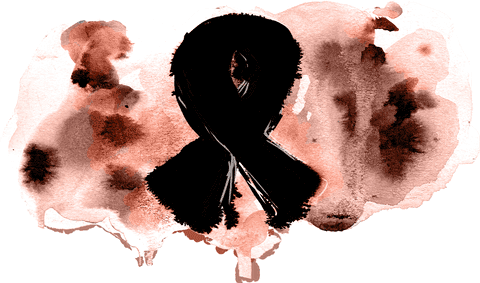
You’ve recently become a member of a club that no one wants to join: those who have lost a loved one. We’re here to help you remember that you are not alone. In fact, Judaism has a wealth of traditions developed to help people get through this time. One of those traditions is shiva, the seven-day mourning period after the funeral. Six Questions About Shiva 1. Shiva is a period of mourning that generally lasts seven days, starting when mourners return home from a funeral. During shiva, a mourner traditionally stays at home or at the home of the deceased, wears torn clothing or a torn black ribbon pinned to one’s clothes and doesn’t go to work or school.
UNDERSTAND SHIVA
2. Shiva begins immediately after the funeral. Traditionally, a mourner sits shiva for a parent, sibling, child or spouse. 3. Shiva is the Hebrew word for “seven,” and shiva traditionally lasts seven days. Some families sit shiva for shorter periods of time, however. For certain Jewish holidays or Shabbat, there are restrictions on sitting shiva. 4. If you're a mourner, it's traditional to recite the Mourner's Kaddish at prayer services conducted three times a day during shiva. Mourners sit on low seats and receive guests, talk about their loved ones who have died, keep a yahrtzeit candle burning and refrain from certain activities like wearing leather, shaving or looking in a mirror. If you're a friend or family member, it's helpful to visit mourners during shiva and provide food and comfort.
LEARN WHAT HAPPENS
5. During shiva, the mourner gets to decide whether or not to initiate conversation. As Rabbi Sari Laufer writes, "The rules and traditions of Jewish mourning tell us that we — the comforters — do not get to set the mode and the tone. It is the bereaved who can tell you if and what he needs to share, or when she wants to cry or laugh."
EXPLORE DEEPER
6. The traditional end of shiva occurs on the seventh day of mourning. One common end-of-shiva practice today is for the mourner literally to “get up from shiva.” The mourners rise from the low seats they've been sitting on and go for a walk, or for an easy outing.
LEARN MORE
7. The next phase of mourning is called sheloshim (pronounced shlo-SHEEM), Hebrew for thirty, and it ends thirty days after burial. Sheloshim is less restrictive than shiva. Mourners can go out, work and perform other everyday activities. Whether you're sitting shiva or doing your best to support a friend in mourning, experiencing shiva traditions can help you feel comforted and part of a community during a difficult time. Look out for our next email, where we’ll explore the Mourner’s Kaddish in greater detail. Do you know someone else who might find this email series helpful? Encourage them to sign up here.

|
|
This email was sent to rich80506@ by community@myjewishlearning.com
24 West 30th Street, 4th Floor, New York, NY 10001
Edit Profile
|
Manage Subscriptions
|
Report Spam
|

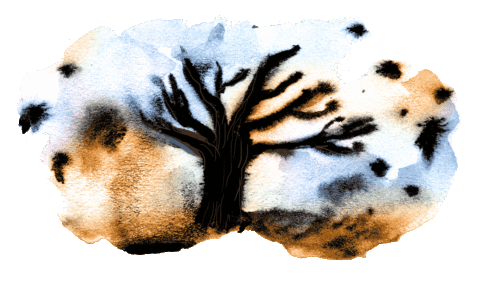
We are so sorry for your loss. Over the next few days and weeks, we’ll help guide you through these customs, sharing with you what happens before and at a Jewish funeral, how to sit shiva — the seven days of mourning — and what prayers are traditionally said for loved ones. You can also explore how Judaism has grappled with big issues, like why bad things happen to good people and what happens to us after we die. Thank you for inviting us to join you on this important journey. If you have questions along the way, feel free to ask them in our discussion group on Facebook.
As we traditionally say, “Ha’makom yenahem etkhem betokh she’ar avelei Tziyon vi’Yerushalayim,” which is Hebrew for, “May God console you together with everyone who mourns for Zion and Jerusalem.”
EXPLORE GRIEF RESOURCES

A Timeline of Mourning Learn the important dates in the journey through the first year of mourning. Jewish tradition defines several stages in the process of mourning.
VIEW COMPLETE TIMELINE

A Rite of Passage Immediately After a Death The time between death and burial is an important transition. Jews bury their dead quickly not just as a kindness to the dead, but as a reminder to the living: life can, and must, continue.
EXPLORE DEEPER

How to Say the Kaddish The Mourner’s Kaddish is an almost 2,000-year-old prayer traditionally recited in memory of the dead. Find the words, the translation, the transliteration, and more.
EXPLORE THE KADDISH
Again, we are so sorry for your loss. We hope the series of emails you'll receive over the next few weeks help you find some consolation and support in this difficult time. Do you know someone else who might find this email series helpful? Encourage them to sign up here.

|
|
This email was sent to rich80506@ by community@myjewishlearning.com
24 West 30th Street, 4th Floor, New York, NY 10001
Edit Profile
|
Manage Subscriptions
|
Report Spam
|

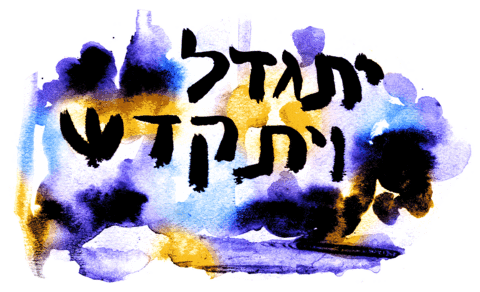
Yitgadal v'yitkadash… Today we’ll take a deeper look at this prayer. Did you know that the Kaddish was written in Aramaic, not Hebrew? Aramaic was the most commonly spoken language at the time the Kaddish was established, and rabbis of the period wanted mourners to be able to understand what they were saying. Exploring Kaddish You may be surprised to discover that the Kaddish prayer never addresses the topic of death. Many people view the prayer as offering praise to God, but Rabbi Elie Kaunfer says it is about much more: "There are two main phrases that are key to understanding the Kaddish. By looking at them closely, we can transform our understanding of the prayer."
EXPLORE DEEPER
You can find the most important things to know about Kaddish — why it’s said, when it’s said, whom one says it for and more — in this article. You can read the full text in Aramaic, transliteration and English translation — along with a video and an audio recording so you can practice saying it — here.
LEARN THE BASICS
Look out for our next email, which provides advice and resources for finding the support you need in this difficult time. Do you know someone else who might find this email series helpful? Encourage them to sign up here.

|
|
This email was sent to rich80506@ by community@myjewishlearning.com
24 West 30th Street, 4th Floor, New York, NY 10001
Edit Profile
|
Manage Subscriptions
|
Report Spam
|

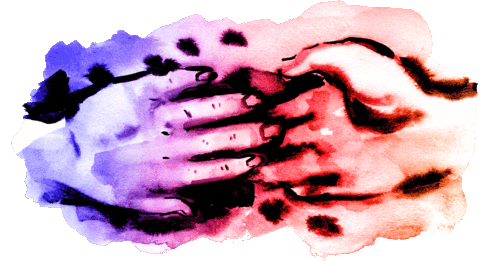
The loss of a loved one can be an incredibly painful and isolating experience. It is normal to feel loneliness, guilt, fear, irritability and many other conflicting emotions. 
How to Find Support After Loss 1. Reach out to friends and family for help. Don’t be afraid to let people know you need help — or that you just need someone to keep you company. 2. Make specific requests for help. Sometimes friends don't know the best way to support you. If you need someone to make you dinner or pick up a prescription, for example, tell them that.
Find a grief support group. Many synagogues and Jewish communities have grief support groups. You don't have to be a member of a synagogue to attend these groups.
Reach out locally. Try reaching out to a local rabbi or community leader if you need help finding a local support group or grief counselor. 5. Take time for yourself. Whether or not you've had people paying condolence visits during this time, it's OK to spend time on your own. Listen to yourself and your own needs.
FIND MORE SUPPORT

Finding Healing Through Community Jewish tradition calls for 10 people, or a minyan, to be present in order for a mourner to say Kaddish. For one Jewish couple, creating their own Kaddish minyan group allowed them to experience the Jewish community in a new way. It was "incredibly healing for us during a year when we were in desperate need of healing," writes Daniela Gerson. Find out how they did it, and how you can create your own supportive Kaddish minyan at home.
LEARN HOW
Get Your Questions Answered An online grief support group can introduce you to others going through similar experiences, and help you find answers from people who have been in your shoes before. Explore My Jewish Learning's private Jewish Discussions About Grief & Mourning group on Facebook.
JOIN NOW
In the next email, you'll learn what happens during sheloshim, the first 30 days after a loved one is buried. Do you know someone else who might find this email series helpful? Encourage them to sign up here.

|
|
This email was sent to rich80506@ by community@myjewishlearning.com
24 West 30th Street, 4th Floor, New York, NY 10001
Edit Profile
|
Manage Subscriptions
|
Report Spam
|

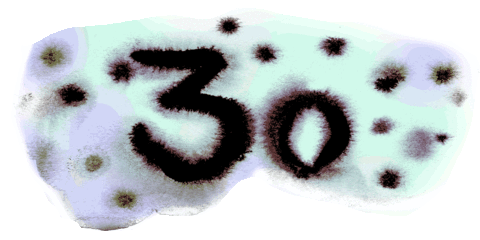
The post-shiva days of sheloshim, the 30 days after burial, serve as a kind of transition, when a mourner returns to work but is still not completely back in the world. Below, Rabbi Scott Perlo explores this transition time. Sheloshim: The Bridge to a New Normal Shiva, Judaism’s best-known mourning ritual, is a beautiful fiction: Mourners are permitted to feel as if life has stopped, and that they can stop with it. People hear less about sheloshim, the 30 days after burial. 
Rabbi Chaim Shreiber has explained why this time frame matters: “The Jewish calendar is based on the moon. Just as the moon waxes and wanes in a cyclical period, the 30 days of mourning are an opportunity for the closing of a full emotional circle. The process begins with the funeral and the first days of shiva, when one can’t even see a glimmer of light. With the passing of time, the light returns in stages, and waxes more and more. Thirty days is an important period of time, a time for renewal and grasping a new reality.” Continue reading Rabbi Perlo's explanation of sheloshim.
EXPLORE DEEPER
There are other important customs later in the year, such as the unveiling of the tombstone and the yahrzeit, the Hebrew anniversary of your loved one’s death. Do you know someone else who might find this email series helpful? Encourage them to sign up here.

|
|
This email was sent to rich80506@ by community@myjewishlearning.com
24 West 30th Street, 4th Floor, New York, NY 10001
Edit Profile
|
Manage Subscriptions
|
Report Spam
|

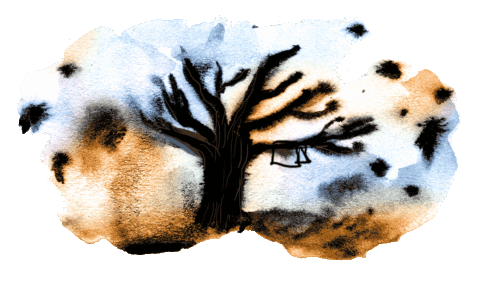
Judaism's Most Comforting Words The rabbis teach us that Torah should be a healing balm. In Jewish sacred literature, we find comfort and inspiration, especially when we need it most, in the emotional and spiritual wreckage that follows the death of someone we love.
DISCOVER THESE READINGS

Here are some quotes from Jewish sources and leaders that you might find helpful and meaningful: "We can endure much more than we think we can; all human experience testifies to that. All we need to do is learn not to be afraid of pain. Grit your teeth and let it hurt. Don't deny it, don't be overwhelmed by it. It will not last forever. One day, the pain will be gone and you will still be there." — Rabbi Harold S. Kushner, When All You've Ever Wanted Isn't Enough: The Search For a Life That Matters
“There is no magic answer to loss. Nothing, not even time, will make the pain completely disappear. But loss is transformative if it is met with faith. Faith is our chance to make sense of loss, to cope with the stone that rolls around in the hollow of our stomachs when something we loved, something we thought was forever, is suddenly gone.”
"I will build an altar from the broken fragments of my heart."
READ MORE WORDS OF COMFORT

In the next email, you'll explore Jewish beliefs about what happens after death, and other big questions. Do you know someone else who might find this email series helpful? Encourage them to sign up here.

|
|
This email was sent to rich80506@ by community@myjewishlearning.com
24 West 30th Street, 4th Floor, New York, NY 10001
Edit Profile
|
Manage Subscriptions
|
Report Spam
|

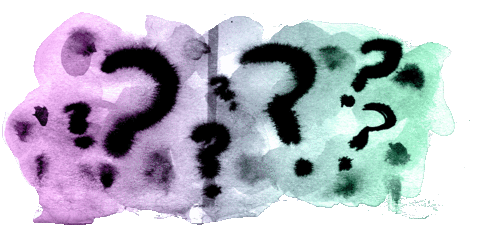
There’s nothing like facing a loved one’s death to force you to confront life’s big questions. How do I go on after a loved one’s death?
EXPLORE LIVING AFTER LOSS
What happens after we die?
LEARN MORE
Why do bad things happen to good people?
DISCOVER MORE JEWISH ANSWERS
The next email in the series will explore additional traditions you can observe in the coming year and beyond.
Do you know someone else who might find this email series helpful? Encourage them to sign up here.

|
|
This email was sent to rich80506@ by community@myjewishlearning.com
24 West 30th Street, 4th Floor, New York, NY 10001
Edit Profile
|
Manage Subscriptions
|
Report Spam
|

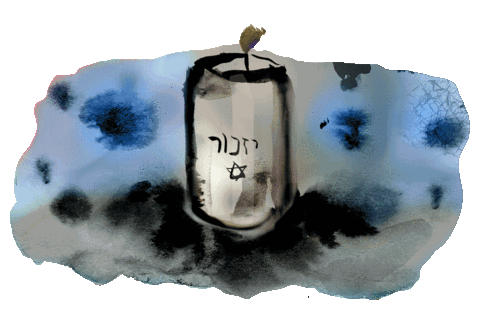
For most losses, the official Jewish mourning process ends with the conclusion of sheloshim, the 30-day mourning period. For those mourning a parent, the official process traditionally continues another 10 months.
No matter who you are mourning, no one expects you to be done mourning in just 30 days, or even in a year. Some people choose to continue to recite the Mourner’s Kaddish beyond the 30 days, and others find different ways to continue to honor their loved one, such as by giving charity in their memory. Here are some other Jewish rituals for remembering your loved one that you may want to observe:
Did these emails help? We hope this series has helped guide you through Jewish mourning rituals and offered some comfort during a difficult time. Please help us help others in similar situations by answering a few short questions.
TAKE OUR SURVEY
Find more support Our Jewish Discussions About Grief & Mourning group on Facebook is your safe space to learn more about Jewish approaches to mourning, find friends going through similar experiences and ask your questions. Join the group to get started.
ASK A QUESTION
To continue discovering other aspects of Jewish tradition and culture, join the My Jewish Learning newsletter by clicking on the button below.
SIGN ME UP

|
|
This email was sent to rich80506@ by community@myjewishlearning.com
24 West 30th Street, 4th Floor, New York, NY 10001
Edit Profile
|
Manage Subscriptions
|
Report Spam
|

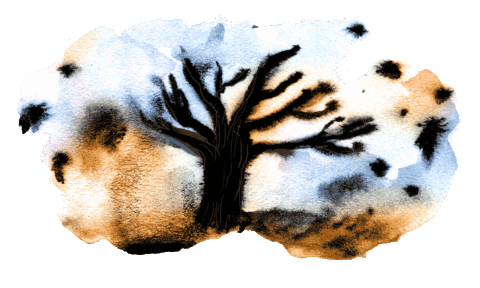
We are so sorry for your loss. Over the next few days and weeks, we’ll help guide you through these customs, sharing with you what happens before and at a Jewish funeral, how to sit shiva — the seven days of mourning — and what prayers are traditionally said for loved ones. You can also explore how Judaism has grappled with big issues, like why bad things happen to good people and what happens to us after we die. Thank you for inviting us to join you on this important journey. If you have questions along the way, feel free to ask them in our discussion group on Facebook.
As we traditionally say, “Ha’makom yenahem etkhem betokh she’ar avelei Tziyon vi’Yerushalayim,” which is Hebrew for, “May God console you together with everyone who mourns for Zion and Jerusalem.”
EXPLORE GRIEF RESOURCES

A Timeline of Mourning Learn the important dates in the journey through the first year of mourning. Jewish tradition defines several stages in the process of mourning.
VIEW COMPLETE TIMELINE

A Rite of Passage Immediately After a Death The time between death and burial is an important transition. Jews bury their dead quickly not just as a kindness to the dead, but as a reminder to the living: life can, and must, continue.
EXPLORE DEEPER

How to Say the Kaddish The Mourner’s Kaddish is an almost 2,000-year-old prayer traditionally recited in memory of the dead. Find the words, the translation, the transliteration, and more.
EXPLORE THE KADDISH
Again, we are so sorry for your loss. We hope the series of emails you'll receive over the next few weeks help you find some consolation and support in this difficult time. Do you know someone else who might find this email series helpful? Encourage them to sign up here.

|
|
This email was sent to mile35256@ by community@myjewishlearning.com
24 West 30th Street, 4th Floor, New York, NY 10001
Edit Profile
|
Manage Subscriptions
|
Report Spam
|


You’ve recently become a member of a club that no one wants to join: those who have lost a loved one. We’re here to help you remember that you are not alone. In fact, Judaism has a wealth of traditions developed to help people get through this time. One of those traditions is shiva, the seven-day mourning period after the funeral. Six Questions About Shiva 1. Shiva is a period of mourning that generally lasts seven days, starting when mourners return home from a funeral. During shiva, a mourner traditionally stays at home or at the home of the deceased, wears torn clothing or a torn black ribbon pinned to one’s clothes and doesn’t go to work or school.
UNDERSTAND SHIVA
2. Shiva begins immediately after the funeral. Traditionally, a mourner sits shiva for a parent, sibling, child or spouse. 3. Shiva is the Hebrew word for “seven,” and shiva traditionally lasts seven days. Some families sit shiva for shorter periods of time, however. For certain Jewish holidays or Shabbat, there are restrictions on sitting shiva. 4. If you're a mourner, it's traditional to recite the Mourner's Kaddish at prayer services conducted three times a day during shiva. Mourners sit on low seats and receive guests, talk about their loved ones who have died, keep a yahrtzeit candle burning and refrain from certain activities like wearing leather, shaving or looking in a mirror. If you're a friend or family member, it's helpful to visit mourners during shiva and provide food and comfort.
LEARN WHAT HAPPENS
5. During shiva, the mourner gets to decide whether or not to initiate conversation. As Rabbi Sari Laufer writes, "The rules and traditions of Jewish mourning tell us that we — the comforters — do not get to set the mode and the tone. It is the bereaved who can tell you if and what he needs to share, or when she wants to cry or laugh."
EXPLORE DEEPER
6. The traditional end of shiva occurs on the seventh day of mourning. One common end-of-shiva practice today is for the mourner literally to “get up from shiva.” The mourners rise from the low seats they've been sitting on and go for a walk, or for an easy outing.
LEARN MORE
7. The next phase of mourning is called sheloshim (pronounced shlo-SHEEM), Hebrew for thirty, and it ends thirty days after burial. Sheloshim is less restrictive than shiva. Mourners can go out, work and perform other everyday activities. Whether you're sitting shiva or doing your best to support a friend in mourning, experiencing shiva traditions can help you feel comforted and part of a community during a difficult time. Look out for our next email, where we’ll explore the Mourner’s Kaddish in greater detail. Do you know someone else who might find this email series helpful? Encourage them to sign up here.

|
|
This email was sent to mile35256@ by community@myjewishlearning.com
24 West 30th Street, 4th Floor, New York, NY 10001
Edit Profile
|
Manage Subscriptions
|
Report Spam
|


Thank you for participating in "A Jewish Journey Through Grief." We hope the emails guided you through Jewish mourning rituals and offered some comfort during a difficult time.
Your answers to a few quick questions can help us provide support for others in similar situations. Can you take this short survey about the email series? Thank you for helping us make My Jewish Learning even better!
TAKE THE SURVEY
|
|
This email was sent to rich80506@ by community@myjewishlearning.com
24 West 30th Street, 4th Floor, New York, NY 10001
Edit Profile
|
Manage Subscriptions
|
Report Spam
|


Yitgadal v'yitkadash… Today we’ll take a deeper look at this prayer. Did you know that the Kaddish was written in Aramaic, not Hebrew? Aramaic was the most commonly spoken language at the time the Kaddish was established, and rabbis of the period wanted mourners to be able to understand what they were saying. Exploring Kaddish You may be surprised to discover that the Kaddish prayer never addresses the topic of death. Many people view the prayer as offering praise to God, but Rabbi Elie Kaunfer says it is about much more: "There are two main phrases that are key to understanding the Kaddish. By looking at them closely, we can transform our understanding of the prayer."
EXPLORE DEEPER
You can find the most important things to know about Kaddish — why it’s said, when it’s said, whom one says it for and more — in this article. You can read the full text in Aramaic, transliteration and English translation — along with a video and an audio recording so you can practice saying it — here.
LEARN THE BASICS
Look out for our next email, which provides advice and resources for finding the support you need in this difficult time. Do you know someone else who might find this email series helpful? Encourage them to sign up here.

|
|
This email was sent to mile35256@ by community@myjewishlearning.com
24 West 30th Street, 4th Floor, New York, NY 10001
Edit Profile
|
Manage Subscriptions
|
Report Spam
|

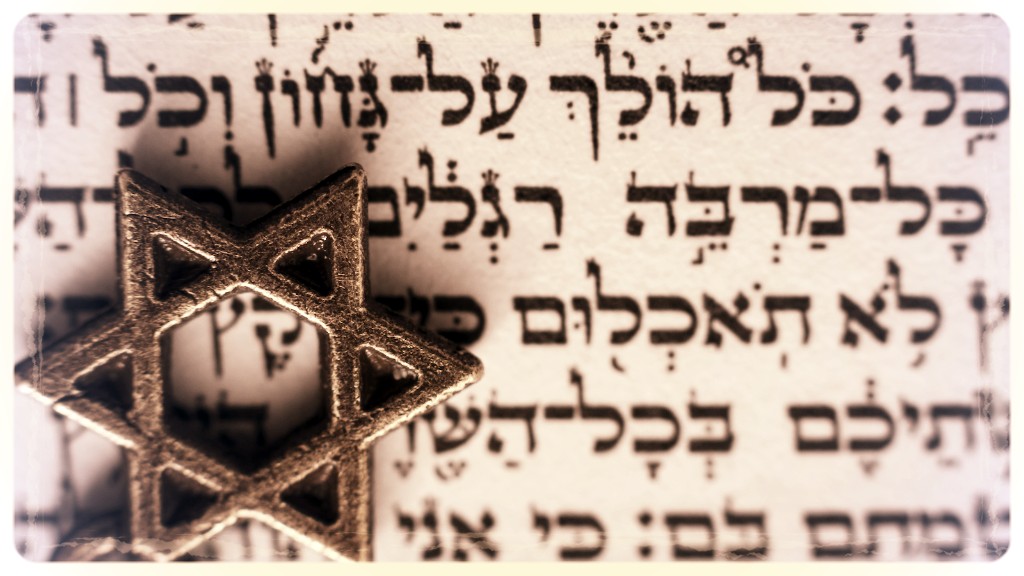
Thank you for participating in our recent email series, "A Jewish Journey Through Grief." We hope you found it comforting, and that it gave you a taste of what My Jewish Learning offers.
My Jewish Learning empowers your Jewish discovery, no matter what stage of life you're in or what your background is. In addition to support for Jewish mourning, you can get your questions answered about everything Jewish, from holidays, to history, to texts, and more. Don't miss out on everything else My Jewish Learning offers. Just click the button below to stay on our email newsletter list.
KEEP GETTING EMAILS
|
|
This email was sent to rich80506@ by community@myjewishlearning.com
24 West 30th Street, 4th Floor, New York, NY 10001
Edit Profile
|
Manage Subscriptions
|
Report Spam
|

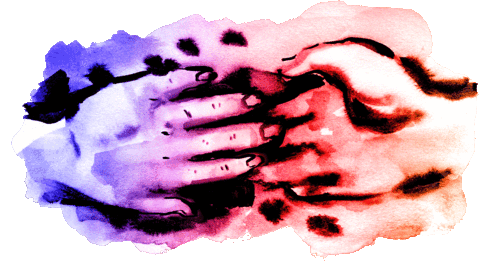
The loss of a loved one can be an incredibly painful and isolating experience. It is normal to feel loneliness, guilt, fear, irritability and many other conflicting emotions. 
How to Find Support After Loss 1. Reach out to friends and family for help. Don’t be afraid to let people know you need help — or that you just need someone to keep you company. 2. Make specific requests for help. Sometimes friends don't know the best way to support you. If you need someone to make you dinner or pick up a prescription, for example, tell them that.
Find a grief support group. Many synagogues and Jewish communities have grief support groups. You don't have to be a member of a synagogue to attend these groups.
Reach out locally. Try reaching out to a local rabbi or community leader if you need help finding a local support group or grief counselor. 5. Take time for yourself. Whether or not you've had people paying condolence visits during this time, it's OK to spend time on your own. Listen to yourself and your own needs.
FIND MORE SUPPORT

Finding Healing Through Community Jewish tradition calls for 10 people, or a minyan, to be present in order for a mourner to say Kaddish. For one Jewish couple, creating their own Kaddish minyan group allowed them to experience the Jewish community in a new way. It was "incredibly healing for us during a year when we were in desperate need of healing," writes Daniela Gerson. Find out how they did it, and how you can create your own supportive Kaddish minyan at home.
LEARN HOW
Get Your Questions Answered An online grief support group can introduce you to others going through similar experiences, and help you find answers from people who have been in your shoes before. Explore My Jewish Learning's private Jewish Discussions About Grief & Mourning group on Facebook.
JOIN NOW
In the next email, you'll learn what happens during sheloshim, the first 30 days after a loved one is buried. Do you know someone else who might find this email series helpful? Encourage them to sign up here.

|
|
This email was sent to mile35256@ by community@myjewishlearning.com
24 West 30th Street, 4th Floor, New York, NY 10001
Edit Profile
|
Manage Subscriptions
|
Report Spam
|

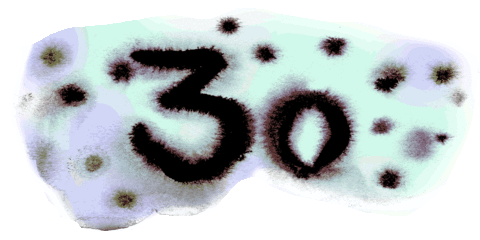
The post-shiva days of sheloshim, the 30 days after burial, serve as a kind of transition, when a mourner returns to work but is still not completely back in the world. Below, Rabbi Scott Perlo explores this transition time. Sheloshim: The Bridge to a New Normal Shiva, Judaism’s best-known mourning ritual, is a beautiful fiction: Mourners are permitted to feel as if life has stopped, and that they can stop with it. People hear less about sheloshim, the 30 days after burial. 
Rabbi Chaim Shreiber has explained why this time frame matters: “The Jewish calendar is based on the moon. Just as the moon waxes and wanes in a cyclical period, the 30 days of mourning are an opportunity for the closing of a full emotional circle. The process begins with the funeral and the first days of shiva, when one can’t even see a glimmer of light. With the passing of time, the light returns in stages, and waxes more and more. Thirty days is an important period of time, a time for renewal and grasping a new reality.” Continue reading Rabbi Perlo's explanation of sheloshim.
EXPLORE DEEPER
There are other important customs later in the year, such as the unveiling of the tombstone and the yahrzeit, the Hebrew anniversary of your loved one’s death. Do you know someone else who might find this email series helpful? Encourage them to sign up here.

|
|
This email was sent to mile35256@ by community@myjewishlearning.com
24 West 30th Street, 4th Floor, New York, NY 10001
Edit Profile
|
Manage Subscriptions
|
Report Spam
|


Judaism's Most Comforting Words The rabbis teach us that Torah should be a healing balm. In Jewish sacred literature, we find comfort and inspiration, especially when we need it most, in the emotional and spiritual wreckage that follows the death of someone we love.
DISCOVER THESE READINGS

Here are some quotes from Jewish sources and leaders that you might find helpful and meaningful: "We can endure much more than we think we can; all human experience testifies to that. All we need to do is learn not to be afraid of pain. Grit your teeth and let it hurt. Don't deny it, don't be overwhelmed by it. It will not last forever. One day, the pain will be gone and you will still be there." — Rabbi Harold S. Kushner, When All You've Ever Wanted Isn't Enough: The Search For a Life That Matters
“There is no magic answer to loss. Nothing, not even time, will make the pain completely disappear. But loss is transformative if it is met with faith. Faith is our chance to make sense of loss, to cope with the stone that rolls around in the hollow of our stomachs when something we loved, something we thought was forever, is suddenly gone.”
"I will build an altar from the broken fragments of my heart."
READ MORE WORDS OF COMFORT

In the next email, you'll explore Jewish beliefs about what happens after death, and other big questions. Do you know someone else who might find this email series helpful? Encourage them to sign up here.

|
|
This email was sent to mile35256@ by community@myjewishlearning.com
24 West 30th Street, 4th Floor, New York, NY 10001
Edit Profile
|
Manage Subscriptions
|
Report Spam
|

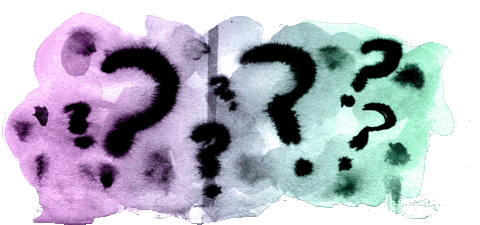
There’s nothing like facing a loved one’s death to force you to confront life’s big questions. How do I go on after a loved one’s death?
EXPLORE LIVING AFTER LOSS
What happens after we die?
LEARN MORE
Why do bad things happen to good people?
DISCOVER MORE JEWISH ANSWERS
The next email in the series will explore additional traditions you can observe in the coming year and beyond.
Do you know someone else who might find this email series helpful? Encourage them to sign up here.

|
|
This email was sent to mile35256@ by community@myjewishlearning.com
24 West 30th Street, 4th Floor, New York, NY 10001
Edit Profile
|
Manage Subscriptions
|
Report Spam
|

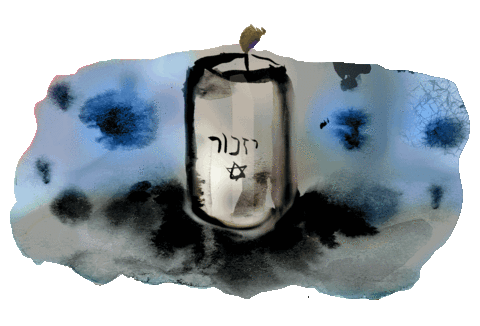
For most losses, the official Jewish mourning process ends with the conclusion of sheloshim, the 30-day mourning period. For those mourning a parent, the official process traditionally continues another 10 months.
No matter who you are mourning, no one expects you to be done mourning in just 30 days, or even in a year. Some people choose to continue to recite the Mourner’s Kaddish beyond the 30 days, and others find different ways to continue to honor their loved one, such as by giving charity in their memory. Here are some other Jewish rituals for remembering your loved one that you may want to observe:
Did these emails help? We hope this series has helped guide you through Jewish mourning rituals and offered some comfort during a difficult time. Please help us help others in similar situations by answering a few short questions.
TAKE OUR SURVEY
Find more support Our Jewish Discussions About Grief & Mourning group on Facebook is your safe space to learn more about Jewish approaches to mourning, find friends going through similar experiences and ask your questions. Join the group to get started.
ASK A QUESTION
To continue discovering other aspects of Jewish tradition and culture, join the My Jewish Learning newsletter by clicking on the button below.
SIGN ME UP

|
|
This email was sent to mile35256@ by community@myjewishlearning.com
24 West 30th Street, 4th Floor, New York, NY 10001
Edit Profile
|
Manage Subscriptions
|
Report Spam
|


Thank you for participating in "A Jewish Journey Through Grief." We hope the emails guided you through Jewish mourning rituals and offered some comfort during a difficult time.
Your answers to a few quick questions can help us provide support for others in similar situations. Can you take this short survey about the email series? Thank you for helping us make My Jewish Learning even better!
TAKE THE SURVEY
|
|
This email was sent to mile35256@ by community@myjewishlearning.com
24 West 30th Street, 4th Floor, New York, NY 10001
Edit Profile
|
Manage Subscriptions
|
Report Spam
|

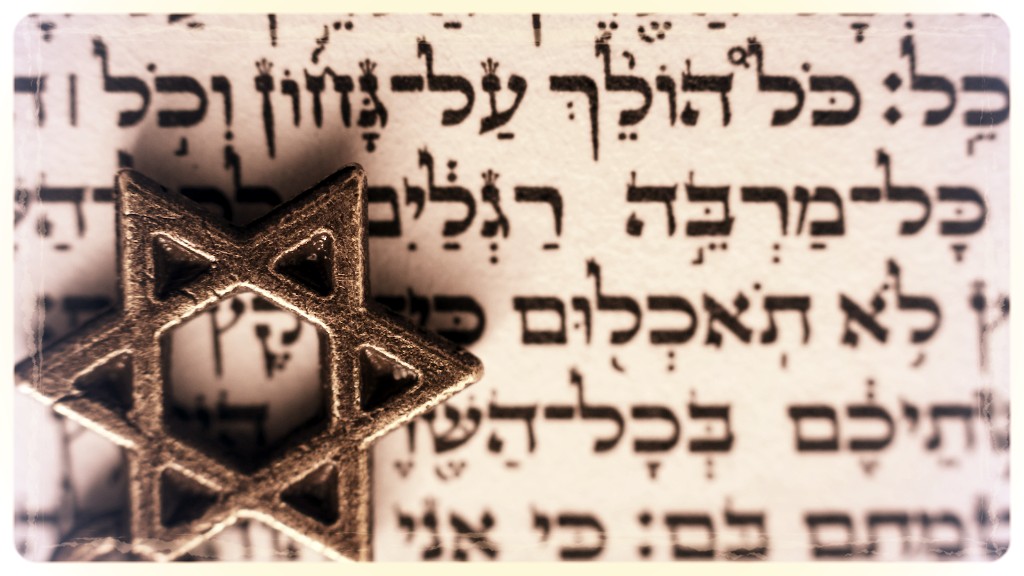
Thank you for participating in our recent email series, "A Jewish Journey Through Grief." We hope you found it comforting, and that it gave you a taste of what My Jewish Learning offers.
My Jewish Learning empowers your Jewish discovery, no matter what stage of life you're in or what your background is. In addition to support for Jewish mourning, you can get your questions answered about everything Jewish, from holidays, to history, to texts, and more. Don't miss out on everything else My Jewish Learning offers. Just click the button below to stay on our email newsletter list.
KEEP GETTING EMAILS
|
|
This email was sent to mile35256@ by community@myjewishlearning.com
24 West 30th Street, 4th Floor, New York, NY 10001
Edit Profile
|
Manage Subscriptions
|
Report Spam
|
|
?

?
?
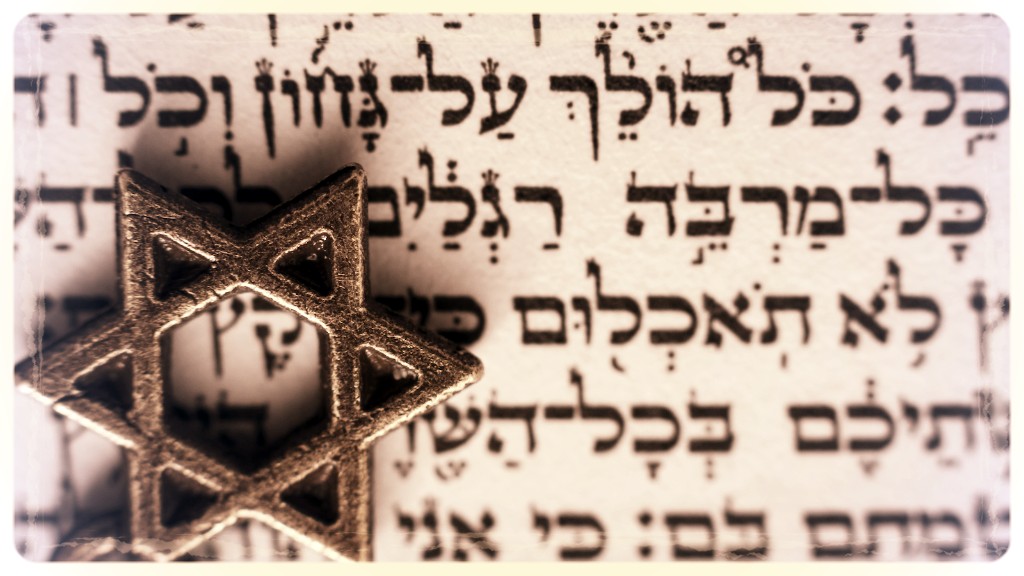
Thank you for participating in our recent email series, "A Jewish Journey Through Grief." We hope you found it comforting, and that it gave you a taste of what My Jewish Learning offers.
My Jewish Learning empowers your Jewish discovery, no matter what stage of life you''re in or what your background is. In addition to support for Jewish mourning, you can get your questions answered about everything Jewish, from holidays, to history, to texts, and more. Don''t miss out on everything else My Jewish Learning offers. Just click the button below to stay on our email newsletter list.
KEEP GETTING EMAILS
|
|
This email was sent to @ by community@myjewishlearning.com
24 West 30th Street, 4th Floor, New York, NY 10001
1-Click Unsubscribe
|
Edit Profile
|
Manage Subscriptions
|
Report Spam
|
|
Join us for online Kaddish and a new class.
If you are having trouble viewing this email,
click here.
| |||||
| |||||
|
|
Join us for online Kaddish and a new class.
If you are having trouble viewing this email,
click here.
| |||||
| |||||
|
|
?

?
?
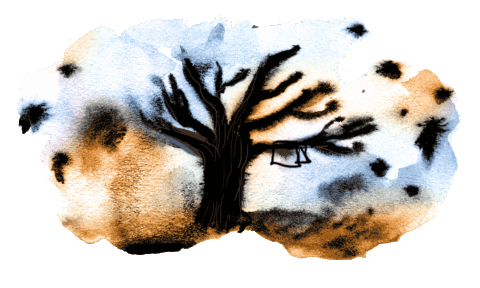
Judaism''s Most Comforting Words The rabbis teach us that Torah should be a healing balm. In Jewish sacred literature, we find comfort and inspiration, especially when we need it most, in the emotional and spiritual wreckage that follows the death of someone we love.
DISCOVER THESE READINGS
?

Here are some quotes from Jewish sources and leaders that you might find helpful and meaningful: "We can endure much more than we think we can; all human experience testifies to that. All we need to do is learn not to be afraid of pain. Grit your teeth and let it hurt. Don''t deny it, don''t be overwhelmed by it. It will not last forever. One day, the pain will be gone and you will still be there." -?Rabbi Harold S. Kushner, When All You''ve Ever Wanted Isn''t Enough: The Search For a Life That Matters
"There is no magic answer to loss. Nothing, not even time, will make the pain completely disappear. But loss is transformative if it is met with faith. Faith is our chance to make sense of loss, to cope with the stone that rolls around in the hollow of our stomachs when something we loved, something we thought was forever, is suddenly gone."
"I will build an altar from the broken fragments of my heart."
READ MORE WORDS OF COMFORT
?

In the next email, you''ll explore Jewish beliefs about what happens after death, and other big questions. Do you know someone else who might find this email series helpful? Encourage them to sign up here.
?

|
|
This email was sent to @ by community@myjewishlearning.com
24 West 30th Street, 4th Floor, New York, NY 10001
1-Click Unsubscribe
|
Edit Profile
|
Manage Subscriptions
|
Report Spam
|
|
?

?
?
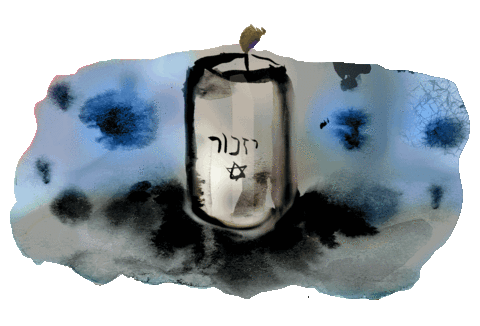
For most losses, the official Jewish mourning process ends with the conclusion of sheloshim, the 30-day mourning period. For those mourning a parent, the official process traditionally continues another 10 months.
No matter who you are mourning, no one expects you to be done mourning in just 30 days, or even in a year. Some people choose to continue to recite the Mourner's Kaddish beyond the 30 days, and others find different ways to continue to honor their loved one, such as by giving charity in their memory. Here are some other?Jewish rituals for remembering your loved one that you may want to observe:
?
Did these emails help? We hope this series has helped guide you through Jewish mourning rituals and offered some comfort during a difficult time. Please help us help others in similar situations by answering a few short questions.
TAKE OUR SURVEY
?
Find more support Our Jewish Discussions About Grief & Mourning group on Facebook is your safe space to learn more about Jewish approaches to mourning, find friends going through similar experiences and ask your questions. Join the group to get started.
ASK A QUESTION
?
To continue discovering other aspects of Jewish tradition and culture, join the My Jewish Learning newsletter by clicking on the button below.
SIGN ME UP
?

|
|
This email was sent to @ by community@myjewishlearning.com
24 West 30th Street, 4th Floor, New York, NY 10001
1-Click Unsubscribe
|
Edit Profile
|
Manage Subscriptions
|
Report Spam
|
|
?

?
?

Yitgadal v''yitkadash. ? Today we'll take a deeper look at this prayer. ? Did you know that the Kaddish was written in Aramaic, not Hebrew? Aramaic was the most commonly spoken language at the time the Kaddish was established, and rabbis of the period wanted mourners to be able to understand what they were saying. ?
Exploring Kaddish You may be surprised to discover that the Kaddish prayer never addresses the topic of death. Many people view the prayer as offering praise to God, but Rabbi Elie Kaunfer says it is about much more: "There are two main phrases that are key to understanding the Kaddish. By looking at them closely, we can transform our understanding of the prayer."
EXPLORE DEEPER
?
You can find the most important things to know about Kaddish - why it's said, when it's said, whom one says it for and more - in this article. You can read the full text in Aramaic, transliteration and English translation - along with a video and an audio recording so you can practice saying it - here.
LEARN THE BASICS
?
Look out for our next email, which provides advice and resources for finding the support you need in this difficult time. Do you know someone else who might find this email series helpful? Encourage them to sign up here.
?

|
|
This email was sent to @ by community@myjewishlearning.com
24 West 30th Street, 4th Floor, New York, NY 10001
1-Click Unsubscribe
|
Edit Profile
|
Manage Subscriptions
|
Report Spam
|
|
?

?
?
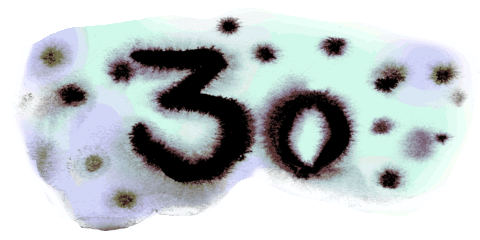
The post-shiva days of sheloshim, the 30 days after burial, serve as a kind of transition, when a mourner returns to work but is still not completely back in the world. Below, Rabbi Scott Perlo explores this transition time. Sheloshim: The Bridge to a New Normal Shiva, Judaism's best-known mourning ritual, is a beautiful fiction: Mourners are permitted to feel as if life has stopped, and that they can stop with it. People hear less about sheloshim, the 30 days after burial. 
Rabbi Chaim Shreiber has explained why this time frame matters: "The Jewish calendar is based on the moon. Just as the moon waxes and wanes in a cyclical period, the 30 days of mourning are an opportunity for the closing of a full emotional circle. The process begins with the funeral and the first days of shiva, when one can't even see a glimmer of light. With the passing of time, the light returns in stages, and waxes more and more. Thirty days is an important period of time, a time for renewal and grasping a new reality." Continue reading Rabbi Perlo''s explanation of sheloshim.
EXPLORE DEEPER
There are other important customs later in the year, such as the unveiling of the tombstone and the yahrzeit, the Hebrew anniversary of your loved one's death. Do you know someone else who might find this email series helpful? Encourage them to sign up here.
?

|
|
This email was sent to @ by community@myjewishlearning.com
24 West 30th Street, 4th Floor, New York, NY 10001
1-Click Unsubscribe
|
Edit Profile
|
Manage Subscriptions
|
Report Spam
|
|
?

?
?
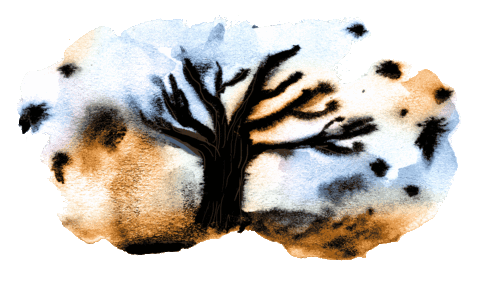
We are so sorry for your loss. ? Over the next few days and weeks, we'll help guide you through these customs, sharing with you what happens before and at a Jewish funeral, how to sit shiva?- the seven days of mourning - and what prayers?are traditionally said for loved ones. You can also explore how Judaism has grappled with big issues, like why bad things happen to good people and what happens to us after we die. ? Thank you for inviting us to join you on this important journey. If you have questions along the way, feel free to ask them in our discussion group on Facebook.
? As we traditionally say, "Ha'makom yenahem etkhem betokh she'ar avelei Tziyon vi'Yerushalayim,"??which is Hebrew for, "May God console you together with everyone who mourns for Zion and Jerusalem."
EXPLORE GRIEF RESOURCES
?

A Timeline of Mourning Learn the important dates in the journey through the first year of mourning.? ? Jewish tradition defines several stages in the process of mourning. ?
VIEW COMPLETE TIMELINE
?

A Rite of Passage Immediately After a Death? The time between death and burial is an important transition. Jews bury their dead quickly not just as a kindness to the dead, but as a reminder to the living: life can, and must, continue.
EXPLORE DEEPER
?

How to Say the Kaddish? The Mourner's Kaddish is an almost 2,000-year-old prayer traditionally recited in memory of the dead. Find the words, the translation, the transliteration, and more.
EXPLORE THE KADDISH
Again, we are so sorry for your loss. We hope the series of emails you''ll receive over the next few weeks help you find some consolation and support in this difficult time.? ? Do you know someone else who might find this email series helpful? Encourage them to sign up here.
?

|
|
This email was sent to @ by community@myjewishlearning.com
24 West 30th Street, 4th Floor, New York, NY 10001
1-Click Unsubscribe
|
Edit Profile
|
Manage Subscriptions
|
Report Spam
|
|
?

?
?

The loss of a loved one can be an incredibly painful and isolating experience. It is normal to feel loneliness, guilt, fear, irritability and many other conflicting emotions. 
How to Find Support After Loss 1. Reach out to friends and family for help. Don't be afraid to let people know you need help - or that you just need someone to keep you company. ? 2. Make specific requests for help. Sometimes friends don''t know the best way to support you. If you need someone to make you dinner or pick up a prescription, for example, tell them that.
Find a grief support group. Many synagogues and Jewish communities have grief support groups. You don''t have to be a member of a synagogue to attend these groups.
Reach out locally. Try reaching out to a local rabbi or community leader if you need help finding a local support group or grief counselor.? ? 5. Take time for yourself. Whether or not you''ve had people paying condolence visits during this time, it''s OK to spend time on your own. Listen to yourself and your own needs.?
FIND MORE SUPPORT

Finding Healing Through Community Jewish tradition calls for 10 people, or a minyan, to be present in order for a mourner to say Kaddish. For one Jewish couple, creating their own Kaddish minyan group?allowed them to experience the Jewish community in a new way. It was "incredibly healing for us during a year when we were in desperate need of healing," writes Daniela Gerson. Find out how they did it, and how you can create your own supportive Kaddish minyan at home.
LEARN HOW
Get Your Questions Answered An online grief support group can introduce you to others going through similar experiences, and help you find answers from people who have been in your shoes before. Explore My Jewish Learning''s?private?Jewish Discussions About Grief & Mourning group on Facebook.?
JOIN NOW
In the next email, you''ll learn what happens during sheloshim, the first 30 days after a loved one is buried. Do you know someone else who might find this email series helpful? Encourage them to sign up here.
?

|
|
This email was sent to @ by community@myjewishlearning.com
24 West 30th Street, 4th Floor, New York, NY 10001
1-Click Unsubscribe
|
Edit Profile
|
Manage Subscriptions
|
Report Spam
|
|
?

?
?

Thank you for participating in "A Jewish Journey Through Grief." We hope the emails guided you through Jewish mourning rituals and offered some comfort during a difficult time.
Your answers to a few quick questions can help us provide support for others in similar situations. Can you take this short survey about the email series? Thank you for helping us make My Jewish Learning even better!
TAKE THE SURVEY
|
|
This email was sent to @ by community@myjewishlearning.com
24 West 30th Street, 4th Floor, New York, NY 10001
1-Click Unsubscribe
|
Edit Profile
|
Manage Subscriptions
|
Report Spam
|
| Data Name | Data Type | Options |
|---|---|---|


 Arts and Entertainment
Arts and Entertainment Business and Industry
Business and Industry Computer and Electronics
Computer and Electronics Games
Games Health
Health Internet and Telecom
Internet and Telecom Shopping
Shopping Sports
Sports Travel
Travel More
More